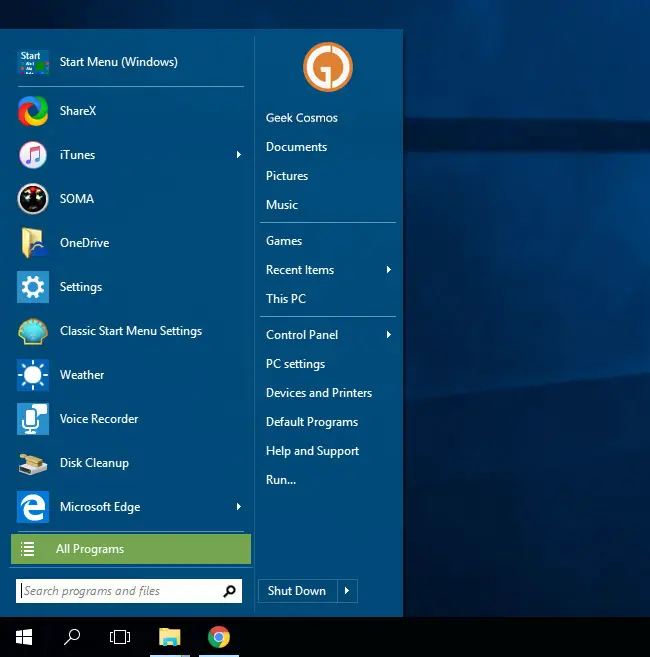How To Get The Windows 7 Start Menu In Windows 10
Windows 10 might be a step in the right direction for Microsoft’s desktop operating system, but there will still be users who, while more than happy with most of the additions and changes in the latest iteration, might prefer older variants of certain core features, such as the Start menu. It’s not that the new Start menu doesn’t look good or isn’t practical, it’s that it’ll take time for certain users to warm up to it. If you made the jump from Windows 7, you might find it confusing to navigate through the new Start menu, especially if you rarely make use of Search.
If this holds true for you, one of the following two applications is what you need. Both can replace the Windows 10 Start menu with one that offers a Windows 7-style layout, complete with a host of customization options that allow you to choose what options are to be visible, have the Start menu replacement match the design language of the new OS, or stick with a classic look.

Classic Shell

Classic Shell has been offering a highly customizable alternative to the default Start menu and Start button since the days of Windows 7, and it continues to remain free, unlike the second application in this montage. It works more or less the same way for Windows 10 as it did for older iterations. After installation, the first time you click the Start button, you get the Classic Shell settings window, which allows you to customize just about every aspect of the new menu, including, but not limited to, the following:
1. Selecting one of three styles and one of five customizable skins (themes) for the menu

Classic Shell styles

Customizable themes
2. Choosing the options you want the Start menu to display along with their layout
3. Setting a custom Start button
4. Customizing the Start menu’s transparency, search box, launch animation, general behavior, and sounds.
If you ever get lost, there’s a Search field at the top of the window to help you navigate through the app’s countless settings. There is even a Backup button at the bottom to save your settings for, say, use on another computer. You can return to the settings window at any time by right-clicking the Start button and selecting Settings from the context menu.

The same menu lets you Exit Classic Shell, leaving you to use the default Start menu until you relaunch the application. A similar option within the Classic Shell replacement itself will let you temporarily switch over to the default Start menu.
Start10

Start10 by the experienced Stardock team certainly seems like the more elegant solution of the two, but unlike its competition, it isn’t free. You can test the application out using its 30-day free trial before you decide to shell out your hard-earned cash. If you need a Windows 10 Start menu replacement that offers familiar navigation and looks good while doing it, you’ll find Start10 worth its $4.99 price tag.

Start10 is actually a few options short of Classic Shell’s offering but it does come packed with all the essentials and adds a few great new customizability features to the mix, such as the ability to select a texture as the background for the Start menu, its tiles or the taskbar, and a link to an online repository of Start buttons. Moreover, you’ll find the themes to be a tad more refined than those offered by Classic Shell, though they are less in number as well as variety and much less customizable.

Start10’s Windows 7 Start menu theme with rounded edges
Do you know of any Windows 10 Start menu replacements that you think should be featured here? Let us know in the comments below!
And before you go, don’t forget to give us a follow over at Facebook, Twitter and Google+. You know you want to!





